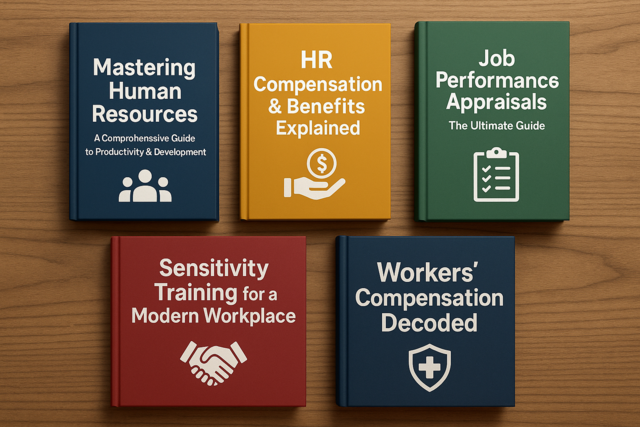Welcome to this article on workplace violence as a global concern. We will look at general issues concerning workplace violence that apply universally and in particular how healthcare workers throughout the world are victims of workplace violence. We will also look at what managers and supervisors can do to help. Let's get started.
Introduction
Data shows that worldwide concern is growing over workplace violence with attention to related issues coming from governments, regulatory agencies, and organizations with the International Labor Organization among them. Issues cross boundaries of countries and industries. The focus is not only on physical assault but also on all aggressive behavior including harassment, bullying, psychological abuse, and mobbing.
Countries such as Canada conduct research and have legislation in place concerning workplace violence. Data shows that over 15% of all workers in Canada report an incident of violent assault happening at work. Canada passed an amendment to its Occupational Health and Safety Act to enact Workplace Violence legislation.
According to this type of legislation, organizations must:
-
Have a policy in place concerning workplace violence
-
Complete a risk assessment
-
Develop a program
-
Implement the policy
Organizations throughout Europe are also express a serious concern about workplace violence. Data shows that violence rates high in the Netherlands, UK, and Finland. Managers throughout Europe are showing concern for issues related to workplace violence. Problems appear high in the areas of education, health, and social work. Experts note that throughout Europe there may be a reluctance to report.
Reports show that in Korea over 10 percent of employees were physically assaulted at the office, mostly by stressed managers. Estimates that come from India show that 25% of workers report physical assault at work either by a manager of co-worker, with this being anger based.
Health care workers throughout the world have high rates of workplace violence. Data puts the numbers at over 50 percent in Australia, South Africa, and China – reporting some form of workplace violence. No one is immune.
Around the world
Many groups report on how around the world workplace violence is a problem. This includes homicide, mobbing, and harassment. No country or occupation is excluded. While the methods for collecting statistics throughout the world are not the same and it is hard to make comparisons, we do see information from at least two dozen countries with each reporting problems. We see problems with both psychological and physical violence.
Statistics show us that homicide is a leading cause of death on the job in the United States for women and second leading cause for men. Around the world the countries that have high rates of sexual harassment and assaults on the job include Argentina, Canada, England, and France. Highest rates are for people working alone especially in a late night retail establishment and as:
-
Taxi drivers
-
Teachers
-
Social workers
-
Health care workers
Women are at risk because they tend to work in high risk jobs including teachers, nurses, bank workers, shop workers, and social workers.
Countries that report violence such as bullying and mobbing include Austria, Australia, Denmark, Germany, the UK, Sweden, and the US.
A look at the causes and costs of workplace violence
Worldwide the cause of workplace violence is a combination of factors. It includes the work environment, individual, condition, how workers interact, how managers treat workers, and how customers and clients interact with workers. The sole reason for workplace violence is not just an individual person.
The cost of workplace violence is huge. It includes both physical violence as well as bullying, mobbing, and harassment. Sick leave and missing time from work as well as productivity issues can come from workplace violence. Both developing and developed countries have problems. Global concerns about terrorism adds to the growing concerns. Data shows these issues of note.
-
Throughout the European Union, harassment is widespread
-
In Japan, court cases involving harassment and bullying continue
-
In developing countries, especially at risk are women, children, and migrants
-
In Malasia, we see reports of molestation and rape in the workplace
Several countries recognize workplace violence in legislation concerning on the job health and safety. These countries include Argentina, Belgium, Canada, Finland, and France. Each of these countries has legislation or amendments to existing laws and regulations to address workplace violence.
About the health care industry and workplace violence world wide
Research shows that workplace violence can cause problems in the delivery of quality health care and in keeping personnel on the job. This we see all over the world. Some call this issue an epidemic with no boundaries of culture and border in both the industrialized and developing parts of the world. Research from transition and developing countries shows over half of those working in health care had at least one experience per year with psychological or physical violence while on the job.
While local details may vary, data shows that throughout the world there is workplace violence for those who work in the healthcare sector. Experts agree that more preventative measures and interventions are needed world wide in this sector to address these issues. Here are some issues to consider.
-
Both psychological and physical violence is widespread in the health care sector
-
Nurses and doctors are a high risk to workplace violence throughout the world
-
Ambulance workers are a high risk to workplace violence
-
Violence can spill over from the streets to the hospital
-
Workplace violence affects both male and female health care workers
What can result from workplace violence in the health care industry includes:
- A negative impact on the quality of care provided
- Many health care workers deciding to leave the profession
- Health care services available can be reduced
- Health care costs increase
- In developing countries, equal access to health care is threatened
-
In developing countries, scarce health care staff become even more scarce
We also see throughout the world no workplace policies to specifically address workplace violence in the health care industry. This means violent incidents are underreported and there is poor follow up on reported incidents.
A look at active shooter incidents worldwide
A disturbing trend worldwide involves active shooting incidents. They continue to occur globally as we have wide availability of guns including assault and semi-automatic weapons. The number of people injured and killed and the frequency of the incidents continues to grow. Here is a list to consider.
1. Newtown, CT – 27 dead at a school shooting
2. Baku, Azerbaijan – 13 dead at a shooting at an oil academy
3. Kauhajoki, Finland – 10 dead due to a shooting at a vocational college
4. Kerfurt, Germany – 16 dead at a school shooting
5. Orlando, FL – 49 dead at a night club shooting
Various groups throughout the world report on violence including active shooters to bullying. Health care workers and in particular nurses suffer from workplace violence.
1. In England we see an increase in attacks at health care facilities due to cutbacks in the workforce and longer wait times for patients.
2. Nurses suffer worldwide as we see accounts of legal systems that will not compensate nurse victims because they argue that nurses must accept personal violence as part of the job.
Some countries keep records on workplace shootings and some do not. Some may suppress information about such shootings. We hear stories about how in the Middle East health care workers were beaten by relatives of a patient who died after surgery. We see no statistics about this. Here are some of the grim statistics on recent U.S. mass shootings. Our hope of course is to eliminate these events in the future.
-
2016 - 49 killed at a night club in Orlando, Florida
-
2015 - 14 killed at an employee gathering in San Bernadino, California
-
2015 – 9 killed at a community college in Roseburg, Oregon
-
2015 – 9 killed at a church in Charleston, South Carolina
-
2012 - 26 killed at Sandy Hook Elementary School in Connecticut
-
2009 - 13 killed at Fort Hood, Texas
-
2009 - 13 killed in Binghamton, New York, at an immigrant community center
- 2007 - 32 killed at Virginia Tech
Here are some ideas about how to minimize throughout the globe incidents of workplace violence.
1. Increase awareness for those who work in high risk professions so they can take precautions
2. Increase penalties for workplace violence
3. Increase support for mental health services
4. Provide strict background checks before someone can get a firearm
5. Increase awareness of warning signs for people who may be preparing to commit a violent act
6. Increase security measures
Increased security measures could include:
-
Panic alarms
-
Security cameras
-
Facilities access controls
-
Guards
The warning signs of potential violence include:
-
A personality change
-
Paranoia
-
Neglect of personal hygiene
-
Lowered productivity
-
Increased absenteeism
-
Arguing with coworkers
-
Yelling
-
Kicking a desk or punching a wall
-
Talk of destruction
-
Depression
-
Family problems
-
Drug or alcohol abuse
-
Preoccupation with violence in movies
-
Weapons collecting
Some definitions
A good first step in helping deal with workplace violence worldwide is to establish some definitions. Here are terms and definitions that could work. All are examples of violence that could occur in the workplace.
-
Abuse – actions that humiliate or degrade a person and indicate a lack of respect for the worth of a person
-
Assault and attack – actions that harm a person physically and include sexual assault and rape
-
Bullying and mobbing – actions that can occur repeatedly and include cruel and vindictive attempts to humiliate a person
-
Harassment – actions based on age, race, color, religion, gender, disability, national origin, social origin, association with a minority, birth, language, religion, politics – meant to hurt the dignity or worth of the person – including sexual orientation, HIV status, or domestic circumstances
-
Racial harassment – threatening actions based on race, national origin, color, or language
-
Sexual harassment – unwanted actions of a sexual nature
-
Threat – a statement or promise of use of force or power that will result in fear of harm that is physical, sexual, or psychological
What managers and supervisors can and should do
A manager or supervisor can have a lack of awareness of the potential for workplace violence because of a lack of training. This can leave the manager or supervisor uncertain and frustrated. Managers may not know how to recognize a problem. Workplace violence may not be obvious. Managers may not see the early warning signs or know how to deal with early or even obvious threats. If there is no problem, imagine how an accused employee is embarrassed. They may leave the job. A lawsuit could follow. Here are some factors to consider.
-
An organization's culture may determine what is acceptable behavior
-
A lack of policies means a manager or supervisor could be uncertain and unable to effectively act when told of an incident of workplace violence
Ideally, a manager can take effective and immediate action when told of an incident or of warning signs. Often workplace violence happens after warning signs appear first that something is wrong. Coworkers typically notice the warning signs first. If training properly, a coworker will contact the supervisor or manager who knows what a good next step would be.
Here are some guidelines for managers and supervisors.
1. Take all threats seriously.
2. Use a hotline or ask your HR department to set one up.
3. Know that anonymity is important. If an employee fears the aggressor will find out, the employee will not report an incident. Ideally, a properly trained employee knows that reporting about the incident could save lives.
4. Understand that you could be liable concerning the safety of an employee even when they are not on company property. A company could face a lawsuit for failing to take responsibility to prevent an injury which a manager or supervisor had a duty to prevent.
5. Be especially careful during a termination. This is a situation that could trigger an emotional incident with an employee. Give the employee a chance to exit in a dignified way. If you have security in the room it could lead to hostility. Think carefully through how to terminate someone. Plan ahead with safety in mind. If you suspect that someone will be volatile, have a counsellor attend a termination meeting.
Let's review
We have now looked at issues related to workplace violence throughout the world. We looked specifically at how healthcare workers throughout the world are victims of workplace violence. We also looked at what managers and supervisors can do.































